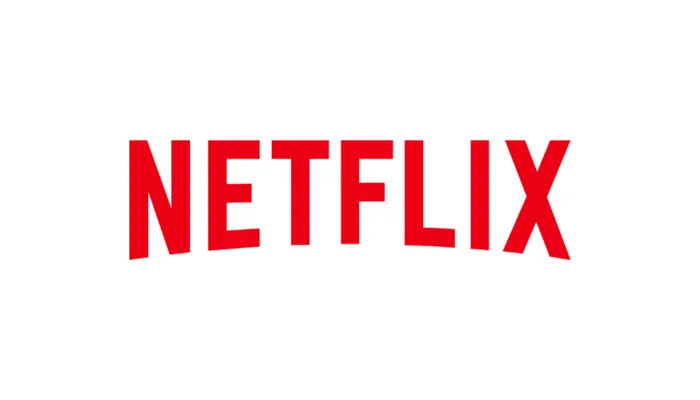"Inside Netflix: The Tech Magic Behind Seamless Streaming"
 Ayan
Ayan
Netflix has revolutionized the way we watch movies and TV shows. With just a few clicks, viewers can stream a variety of content without downloading files or waiting for buffering. But how does Netflix make this happen so seamlessly? Let's dive into the technology behind Netflix's streaming service.
1. Content Delivery and Storage
Netflix has a massive library of movies, TV shows, and documentaries that is continuously updated. To deliver content smoothly to millions of users, Netflix doesn’t store all of its media in a single location. Instead, it employs a global network of data centers and partners with ISPs (Internet Service Providers) worldwide. Here’s a closer look:
Content Delivery Network (CDN): Netflix uses its own CDN called Open Connect, which allows it to efficiently distribute content globally. Open Connect is a network of servers strategically located in various regions to minimize latency. These servers are closer to end-users, so data doesn’t have to travel long distances, ensuring faster load times.
Data Centers and Edge Servers: Netflix places servers at ISP locations to bring content closer to users. Edge servers store popular and frequently streamed content locally, reducing buffering times and delivering content faster. When you start a stream, Netflix directs your device to the nearest server with the content you want to watch.
2. Encoding and Compression
Every movie or show on Netflix needs to be encoded to stream smoothly across different devices and internet speeds. Encoding and compression are crucial to delivering high-quality video without excessive data usage.
Multi-Bitrate Streaming: Netflix encodes each piece of content at multiple bitrates. A bitrate is the amount of data processed over a given time, measured in Mbps (Megabits per second). High bitrates mean higher quality but require more bandwidth. Netflix offers various bitrates, which allows it to dynamically adjust the quality based on a user’s internet speed.
Adaptive Streaming: With adaptive streaming, Netflix detects your network's available bandwidth and automatically selects the best quality stream to avoid interruptions. If your connection becomes unstable, Netflix temporarily lowers the quality to prevent buffering, then improves it as soon as possible.
Codec Efficiency: To compress data, Netflix uses video codecs like H.264, H.265, and AV1. These codecs reduce the file size without significantly compromising quality, making it easier to deliver high-quality streams even on limited bandwidth.
3. Personalization and Content Recommendation
One of Netflix’s defining features is its personalized content recommendations, powered by machine learning algorithms.
User Profiles and Data Collection: Netflix tracks user behavior, such as the shows you watch, how much of each episode you view, when you pause or stop, and even when you skip parts of an episode. All of this data contributes to personalized recommendations.
Recommendation Algorithms: Netflix uses complex algorithms to analyze patterns and suggest content you’re likely to enjoy. The recommendation engine considers factors like genre preferences, similar user profiles, trending content, and your watch history. The more you watch, the better Netflix gets at recommending content tailored to your tastes.
A/B Testing: Netflix often runs A/B tests on different viewers to fine-tune its user experience and algorithms. For example, it may test different cover art, trailer lengths, or playback features to see which drives more engagement.
4. Streaming Protocols and Playback
Netflix relies on HTTP-based streaming protocols to deliver content across the internet. This means it sends video data over standard internet protocols that allow for easy scalability and compatibility with multiple devices.
HLS and DASH Protocols: Netflix uses HTTP Live Streaming (HLS) and Dynamic Adaptive Streaming over HTTP (DASH) protocols to break video files into smaller segments. These segments are downloaded as needed, allowing for smooth playback and enabling adaptive bitrate streaming to adjust quality dynamically.
Buffering and Caching: When you start a Netflix stream, your device downloads a few seconds of video data to create a buffer. This initial buffer allows for uninterrupted viewing by compensating for short-term fluctuations in internet speed. If the connection weakens, Netflix continues streaming at a lower quality until the speed improves.
Digital Rights Management (DRM): To prevent piracy, Netflix uses DRM technology to protect its content. DRM controls how media files are accessed and ensures that users can only view content on authorized devices, safeguarding copyrighted material.
5. Device Compatibility
Netflix is designed to be accessible across a wide range of devices, from smartphones to smart TVs and gaming consoles. Ensuring compatibility requires extensive testing and optimization.
Cross-Platform Development: Netflix uses a combination of native app development and web technologies to create consistent user experiences across devices. Each app is optimized for its specific platform to ensure smooth playback and fast response times.
Encoding for Multiple Resolutions: Netflix encodes its content for various resolutions (from standard definition to 4K HDR) to adapt to different screen sizes and resolutions. It also allows for seamless transitions when users switch from one device to another mid-stream.
6. Scaling and Reliability
With millions of users streaming simultaneously, scalability and reliability are crucial to Netflix’s success. Netflix achieves this through a robust infrastructure and load-balancing techniques.
Microservices Architecture: Netflix uses a microservices architecture where different functions are broken down into smaller, independent services. This modular approach enables Netflix to scale its infrastructure, optimize specific functions, and deploy updates without disrupting the entire system.
Failover Mechanisms: To prevent disruptions, Netflix has built-in failover mechanisms. If one data center or server goes down, traffic is rerouted to a nearby location to keep the stream going. Netflix conducts regular “chaos engineering” tests to simulate potential issues and ensure its system can handle unexpected failures.
Conclusion
Netflix’s streaming service is a marvel of modern technology, combining CDN, adaptive streaming, machine learning, and cross-platform compatibility to deliver a seamless experience. From its recommendation algorithms to its vast global server network, every component is designed to ensure you can sit back, relax, and enjoy your favorite content with minimal buffering and interruptions.
Subscribe to my newsletter
Read articles from Ayan directly inside your inbox. Subscribe to the newsletter, and don't miss out.
Written by

Ayan
Ayan
"I post blogs here in a simple way, so that a 5-year-old can read and understand them."